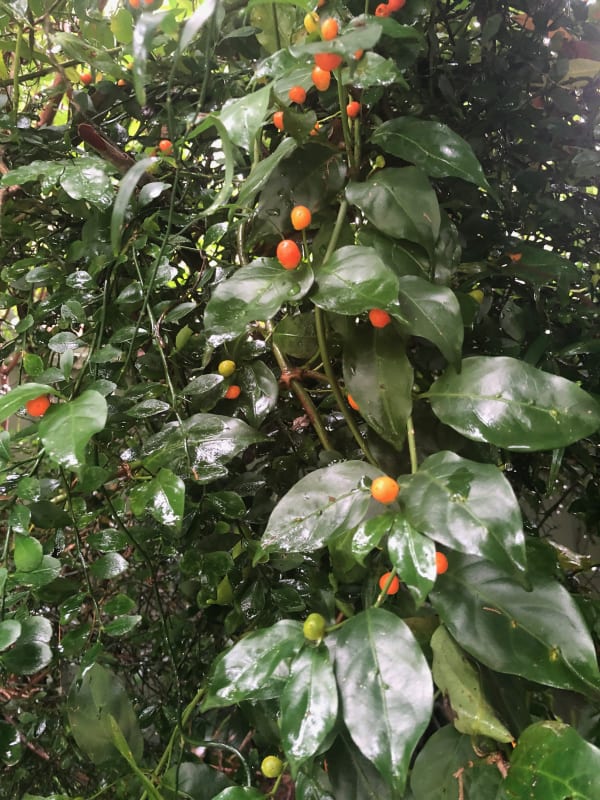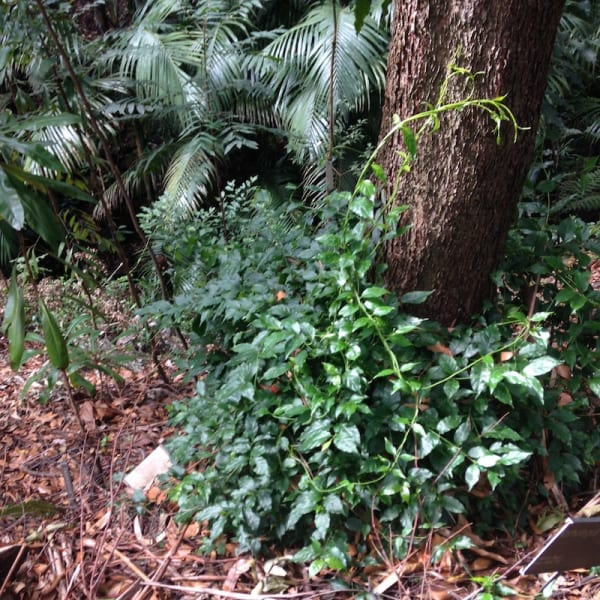A common feature of many natural areas in the Illawarra is the presence of vines. Smaller scrambling vines in woodland and sandy scrubland, larger vines like the SilkPod Vine (Parsonsia straminea) among the she-oaks and the eucalypts, and in the rainforests absolutely massive vines with stems as thick as your waist, growing tens of metres into the forest canopy.
This weeks's vine, the Jasmine Morinda or Gynochthodes jasminoides, is somewhat unusual among vines of the rainforest because it is relatively small and delicate, reaching only a few metres high at most. It is not particularly conspicuous when not in flower or fruit, but the flowers are pleasantly scented, white or creamy coloured, while the fruit, which are about 5mm in diameter, ripen from green to yellows and oranges and finally become a deep orangish red.

If you take a walk in rainforest, or wet sclerophyll forest, you may be able to spot this little vine growing up trees or shrubs alongside the walking track, made visible at the moment by all the fruit. The fruit are recorded to be edible but with an unpleasant taste, and I must admit I've never tried one.
They're also considered attractive to a range of fauna and flora, but although I've been watching this plant pretty carefully I haven't yet seen any birds or insects eating them.
Due to its size, Jasmine Morinda is one of the relatively few local vines that are relatively suitable to suburban gardening in shady situations. It prefers part shade and can even cope in heavy shade, though it will probably not flower or fruit so well in the latter.
Seedlings can be planted in a garden bed, in a pot, or even in a hanging basket. Leave the stems to hang downwards out of a pot, twine upwards around another plant or a support of some kind, and prune back if they get too long and leggy for your liking. Without a support this species will tend to form a little hillock, up to about 50cm high. I haven't grown Jasmine Morinda indoors, or at least not yet, but I intend to start as soon as I can get some of these seeds to produce new little vines.






